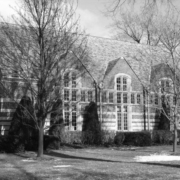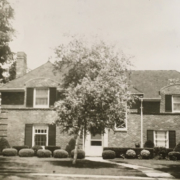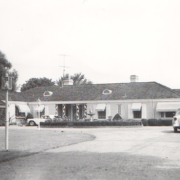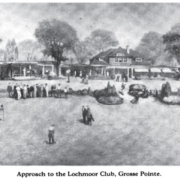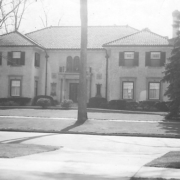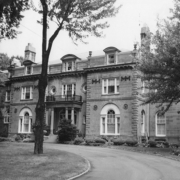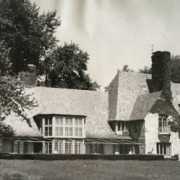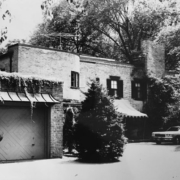Historical Architecture of Grosse Pointe – Sewage Pumping Station
Last week we concluded our series on Richard H. Marr, the “Architect of Midwest Millionaires” as we presented some of the residential projects he created in Grosse Pointe during the 1920’s and 1930’s. This week we head to Grosse Pointe Farms to visit the city’s sewage pumping station, located at 305 Chalfonte. It was completed in 1929, having been designed by prominent Detroit architect, J. Ivan Dise and built by engineering firm Hubbell, Hartgering & Roth. Image courtesy of waymarking.com
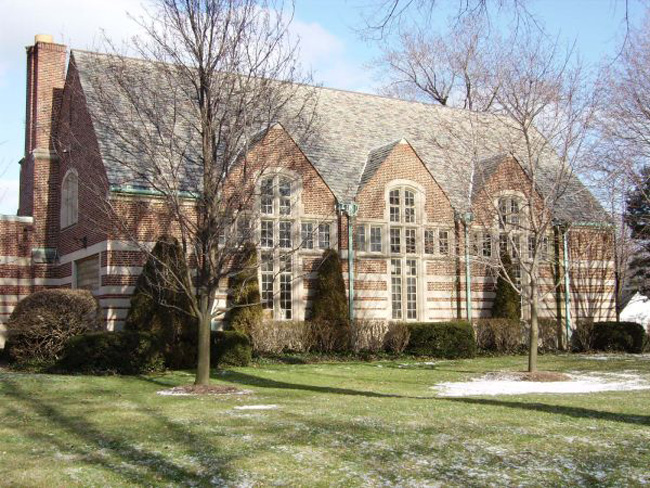
The majority of Dise’s creations in Grosse Pointe occurred during the 1920’s and 30’s. Prior to designing The Village of Grosse Pointe Farms important new facility, Dise’s focus of attention in the community was primarily residential projects. His houses were (and still are) some of the most attractive in the area. We recently featured Dise’s work on Oxford Road and the 10 homes he produced for realtor and developer Arthur J. Scully as part of the “Arthur J. Scully Eastmoreland Park Sub” during the late 1920’s – you can read the full story by clicking here.
“In the summer of 1893, residents of Grosse Pointe organized the Grosse Pointe Water Company. Soon after, a village waterworks was built on Lake Shore near Moross to serve houses along the lake. The Peninsular Electric Light Company (forerunner of the Detroit Edison Company) bought the facility in 1905. The company provided service to Grosse Pointe Farms, and later, Highland Park. During the 1920s Grosse Pointe evolved into a suburb and required a larger water system”. Source: waymarking.com. It has been reported the plot for the pumping station was originally purchased in 1920. The property, known as lots 1-4, between Chalfonte and Mack on Kerby Road, was purchased from Eugene Beaupre to build a sewage treatment plant. According to the 1922 publication, The Village of Grosse Pointe Farms, Michigan, Its Past, Present and Future, 1893-1922, we understand, “the property had the advantage being centrally located, as well as being situated at a low point in the Village, which required a minimum of pumping, force mains and sewers, and also enabled the pump well and the plant to be built together, giving lower operating costs and better operation”. Prior to the completion of the pumping station, Grosse Pointe Farms water was provided by Detroit. In 1927, The Village of Grosse Pointe Farms created a village-wide sewer system. Two years later the new facility on Chalfonte, consisting of a filtration plant, sewage pumping station, and a settling tank, was completed. Source: Grosse Pointe (MI) (Then & Now) Ann Marie Aliotta, and Suzy Berschback.
In his design for the pumping station J. Ivan Dise created a handsome asymmetrical one-story building, reportedly an Art and Crafts influenced interpretation of Tudor and Gothic architectural styles. The facility is constructed from brick with a slate roof, and rests on a limestone foundation. The design features three large windows, in cross formations, on the front section of the gable-roof (located on the Kerby and Chalfonte side). Much of the building’s exterior features an extensive use of smooth cut limestone as a decorative element, this includes the striping, window surrounds, mullions, and other trim. The interior of the building, in the southern half, has terrazzo floors, yellow tile, and buff brick walls. Source: waymarking.com. The article on waymarking.com also explains that much of the equipment used today was installed when the building was built, including the induction and pump motors (manufactured by General Electric, patented in 1915); the boiler; and the 10-ton-capacity Armington Crane. Images are courtesy of Katie Doelle.
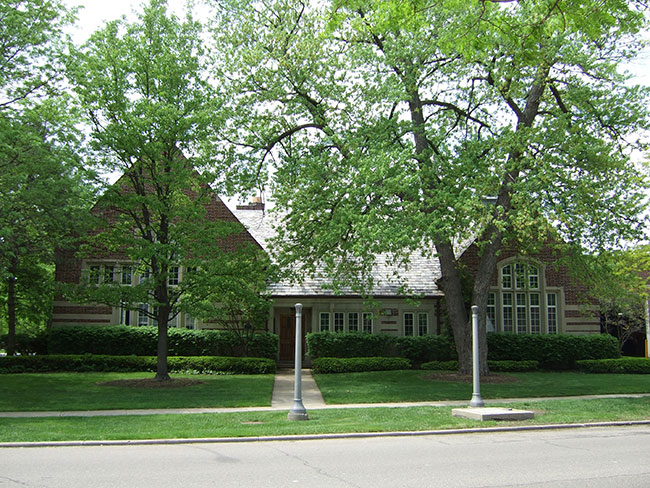

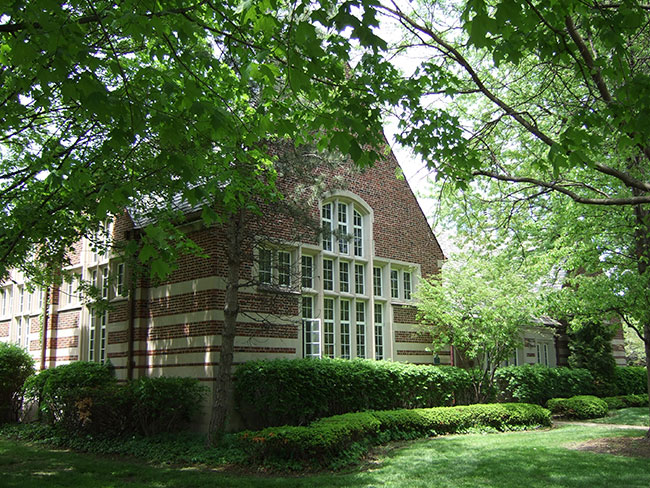
The engineers of the pumping station were Hubbell, Hartgering & Roth. Founded in 1915, by Clarence W. Hubbell, the firm operated under his name until 1922, when two partners – John Hartgering and Albert Roth – joined the firm, thus changing the name of the compnay to Hubbell, Hartgering & Roth. Fifteen years later, the firm became Hubbell, Roth & Clark, Inc., the name under which the company operates to this day, with offices located across Michigan.
While the building was primarily a pumping station it also became a designated ‘civil defense fallout shelter’, this is marked by a sign. The image below is courtesy of waymarking.com (a second ‘civil defense fallout shelter’ is located at Grosse Pointe Baptist Church, Grosse Pointe Woods).
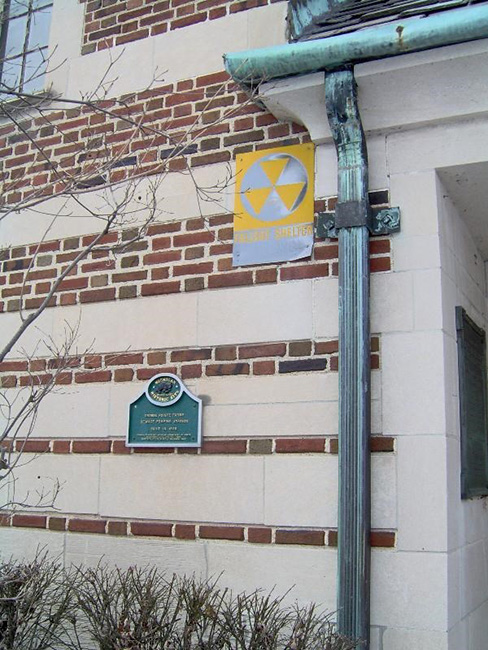
Both the pumping station and the fallout shelter at 305 Chalfonte were listed as Michigan Historic Sites in 1993. Image courtesy of Katie Doelle.
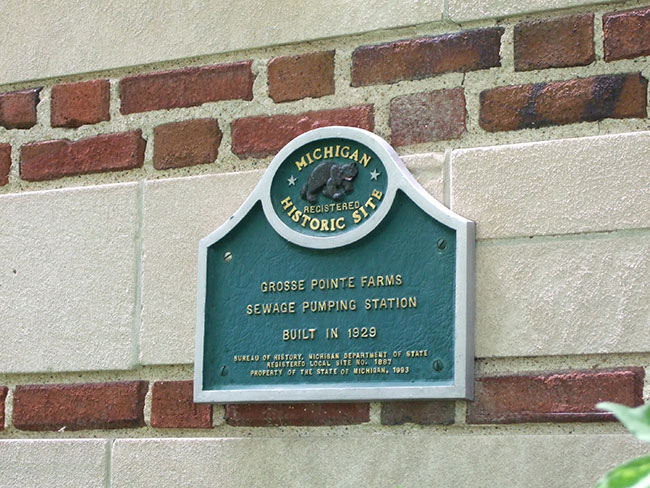
The Statement of Significance, on waymarking.com provides the following description – “the Grosse Pointe Farms Sewage Pumping Plant has historical significance as an expression of the development of public works in Grosse Pointe Farms in its evolution from a village to a city”. Grosse Pointe Farms was incorporated as a city in 1949…the rest is history.
*Photos courtesy of the Higbie Maxon Agney archives unless stated.
** Research, information, and data sources are deemed reliable, but accuracy cannot be fully guaranteed.
Written by Katie Doelle
Copyright © 2022 Katie Doelle

